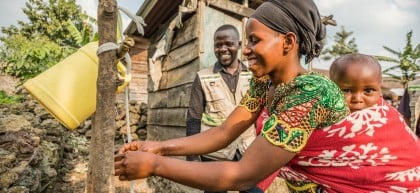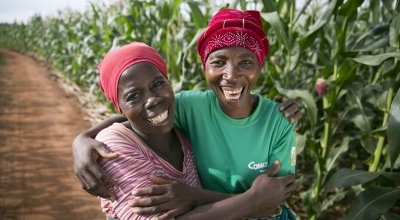
Knowledge Hub
Breaking the Cycle of Conflict: What Can Humanitarian and Development Actors Do?
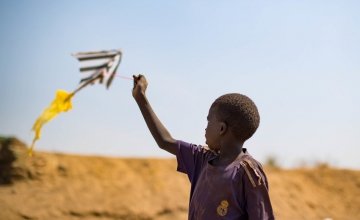
Conflict is on the rise globally, and is the single biggest driver of humanitarian needs today. Continuing our 'thought leadership' series, Caitriona Dowd, Concern’s Humanitarian Policy Advisor, explores the links between conflict and humanitarian crisis, and the urgent imperative to build peace.
Conflict is on the rise and is driving humanitarian needs
Around the world, violent conflict is increasing. After several years of growing global peace, violent conflict has significantly increased in the past decade. By some estimates, the number of countries involved in violent conflicts is the highest in three decades. Not only is conflict increasing, but it is also the single greatest driver of humanitarian crisis today. Over 80% of humanitarian funding goes to conflict-affected contexts.
Over the course of the past year, I worked with Concern teams in Afghanistan, Central African Republic, Haiti, Lebanon, South Sudan, Somalia and Syria, to better understand how conflict affects communities, and to document and share how conflict is experienced by people closest to crisis. The accounts the teams and I collected are shared in two thematic studies on Conflict and Displacement and Conflict and Hunger and in Concern’s new report, Breaking the Cycle.
Conflict’s reach goes far beyond the scope of physical violence alone
Conflict has a devastating impact on food security and displacement in areas of acute violence. These impacts are devastating and long-lasting. In Somalia, Faduma* recounted her experience of years of intermittent sieges by armed opposition groups on her town, restricting trade, population movement, and humanitarian access. In Syria, shifting frontlines mean Laila* and her children have been displaced six times in as many years, in a near constant search for safety.

But conflict also affects communities in less visible, sometimes hidden ways, transforming (and often destroying) economies, social networks and household support systems far from the frontlines. In South Sudan, community members described how local systems for mutual support, solidarity and reciprocity had broken down in the face of unprecedented crisis. Even in areas far away from the frontlines of fighting, like Aweil North, in the north-west of South Sudan, the impact of the national crisis is affecting them in similar ways. A group of male farmers spoke about their lives before the crisis.
If you didn’t have something, your relatives could help you. Now, you only struggle for yourself. Before, we used to help each other, but now, that doesn’t happen. Back then, the community used to sit together and see – who is very poor? – and help that person. Now, for this life, our current life, it is much harder than before.
These changes in the way communities help and support each other can have a long-term impact on resilience, coping strategies and development long after conflict is over.
To make progress on Sustainable Development Goal 16, of promoting peaceful and inclusive societies for sustainable development, we must tackle conflicts complex and multi-faceted drivers and consequences, including the damage done to social structures.
Conflict is gendered
While conflict can be devastating for entire households, communities and even countries, it also has different impacts on different groups. Conflict affects women, men, youth and people from vulnerable groups in starkly different ways that often reinforce existing inequities.
In Central African Republic, women and girls shared stories of the risks they face at every stage of the displacement cycle. At the onset of conflict and initial flight, women and girls are often targets of sexual and gender-based violence. During displacement, they may experience not only sexual exploitation and abuse, but also gendered denial of access to basic services. On return, women face challenges that are conditioned by social roles, and their status as mothers, widows, property owners or survivors of violence. These risks are all compounded by intersecting inequalities and vulnerabilities: when armed forces attacked a village near the town of Kouango, in southern Central African Republic, many of the most vulnerable people in the community were left behind because they could not flee. Bernadette*, a mother of two who has a pre-existing disability affecting her ability to walk, recalled:
Only a few disabled people stayed. They committed abuses and raped girls. I had to hide my daughter under the bed. I lost everything.
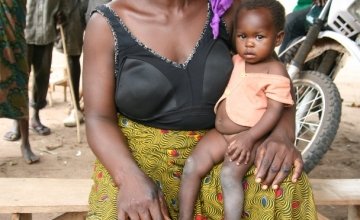
Men’s and boys’ experiences of conflict and displacement are also profoundly gendered, and include being severely restricted in their mobility and targeted for forced recruitment. Men also reported deep-seated feelings of shame and helplessness in the face of their own perceived failure to provide for and protect their families. Empowering women is an urgent and important step to address these inequalities and begin to change damaging patterns of gendered violence in conflict. But women cannot, and must not be asked to, bear the burden of social change alone. Men must be engaged as allies in the fight against gender-based violence and harmful gender roles, and in the work of truly transforming gender relations.
Conflict’s legacy lasts much longer than violence alone
Conflict casts a long shadow over the lives of some communities in Aweil North, near the border between Sudan and South Sudan, who recalled “the long war” between 1983 and 2005. As one member of a local health committee recalled:
The conflict caused us a lot of pain. Our children died, our cattle were taken away. I always dream I will see my family again but they will never come back. All that pain is in this place. What will make me smile again?
The stories of communities whose lives were destroyed by the last civil war are a stark reminder of the cyclical nature of many conflicts, and the importance of understanding the historical, as well as political and social context, of a crisis.
Similarly, in Central African Republic, for many, individuals, households and communities continue to feel the effects of violence long after formal hostilities end. Communities whose assets were destroyed began to undertake the enormous task of rebuilding their lives, but in doing so, often faced precarious economic futures, forcing them into different – and potentially unsustainable – lines of work. Near the town of Bossembélé, Antoine*, a 47-year-old farmer, was displaced with his family of 15 for several months in the wilderness. Three years after his return, he told Concern:
We are like refugees. We had to reconstruct everything from zero.
The threat of slipping back into violence is also a lasting legacy of conflict. To this day, many in the town maintain that friends and neighbours remain away out of fear. As one woman said “only the brave came back”.
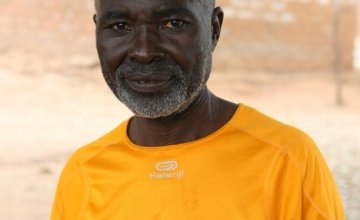
The cycle can be broken
The accounts shared by individuals throughout Concern’s new report demonstrate the urgent need to respond to conflict, address its impacts, and work with communities to resolve and prevent it. Often, this task can seem monumental. However, when rooted in evidence and best practices, supporting locally-owned peacebuilding initiatives can have a profound impact on communities’ chances for a more peaceful future. In Central African Republic, for example, Concern is working with communities to establish or re-engage structures at local level for managing conflicts. In some cases, these existed before the crisis, but were destroyed in the subsequent conflict. Empowering communities to rebuild inclusive institutions after violence can be a vital step in re-establishing peace and rebuilding social cohesion. As part of a five-year programme, committees will be trained in mediation skills and non-violent conflict resolution. Beyond conflict management alone, community structures will also be trained and supported in initiatives to reduce gender-based violence and environmental vulnerability. Integrated approaches of this kind, that recognise the complex, unequal and often gendered consequences of conflict, help the whole community enjoy the dividends of sustainable peace.
Although the drivers and consequences of conflict are enormously complex and multi-faceted, concerted locally-led action in three key areas can help communities build lasting peace:
- Integrating peace programming to address peace-building, alongside conflict’s complex drivers and consequences
- Supporting relationship-building and the transformation of social norms in conflict-affected communities
- Reinforcing systems for more effective, sustainable, and inclusive conflict management.
In its 50th year of tackling crisis in the world’s most conflict-affected contexts, Concern is committed to doing more than ever to alleviate suffering; work with communities to address the root causes of poverty and vulnerability; and empower women, men, youth, and peace champions from vulnerable groups to build a better future for their communities.
*Names have been changed to protect identities
Caitriona Dowd
Humanitarian Policy Advisor
About the author
Caitriona Dowd is Concern’s Humanitarian Policy Advisor, based in Dublin. She supports peace-building activities and research in Concern programmes.
Download the report
Read the full report on 'Breaking the Cycle of Conflict, Hunger and Human Suffering'.
